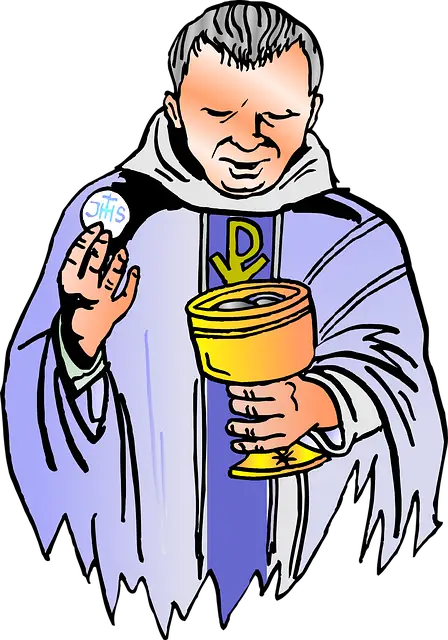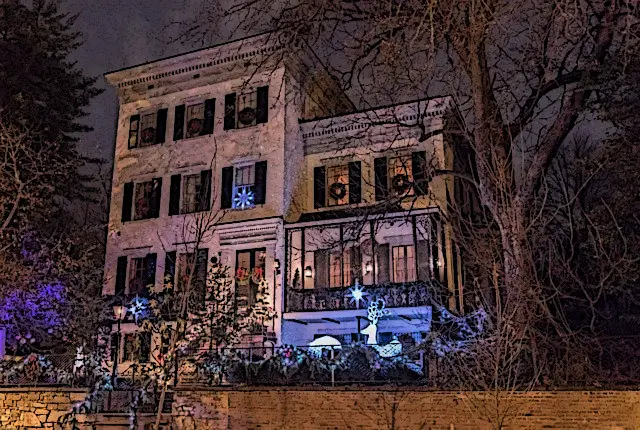Christmas
Introduction
An annual festival in Christianity celebrating the birth of Jesus Christ, the word ‘Christmas’ itself comes from joining two words together: ‘Christ’ and ‘Mass’. This is because, on Christmas Eve, Christian believers attend religious services at their local church.

This mass service, which is sometimes also known as ‘Communion’ or ‘Eucharist’, is where Christians remember that (according to their faith) Jesus Christ died for their sins and came back to life. Since the Christ Mass was the only service that was allowed to take place after sunset and before sunrise the following day, people began to have it at midnight.

Origins and History
Christmas celebrations do not appear in festival lists provided by historical Christian writers, Irenaeus and Tertullian. Arnobius, an early Christian apologist who lived during the reign of Diocletian blamed the pagan celebrations of birthdays as the root cause of the earliest Christmas celebrations.
Stories in the Books of Mathew and Luke prompted the earliest Christian writers to suggest numerous dates for the anniversary of Jesus’ passing. The first-ever recorded Christmas celebration took place in Rome in 336.
In the East, Christmas was celebrated in connection with the Epiphany, an event that took place on January 6. This particular holiday is a celebration of the baptism of Jesus, as described in the books of Mathew, Luke, and Mark. As part of the revival of Orthodox Christianity, Christmas was promoted in the East following the death of Emperor Valens in 378, who was pro-Arian. The Christmas feast was introduced by Constantinople (the capital city of Rome) in 379.
Significance of the Date
According to traditional Christian accounts, when Joseph and Mary arrived in the city of Bethlehem, the inn had no room so they were offered the stable. Christ was born soon after, and the angels proclaimed the news to shepherds in the surrounding areas.
December 25th was the date for the winter solstice on the Roman calendar. According to Christian beliefs, Jesus chose to be born on the shortest day of the year for symbolism. Various Bible passages linked his birth to the Sun. In the 17th century, Issac Newton even argued that the date of Christmas was selected to correspond with the solstice.
Christmas and Paganism
It is also stated that the Church chose the date of December 25 due to festivals held by the Roman pagans honoring the Sun god, Sol Invictus. In 1743, German Protestant Paul Jablonski argued that the Church had ‘paganized’ Christmas (and in essence debased the Church) by choosing the date in order to correspond to the Roman solar holiday, Dies Natalis Solis Invicti (which is a festival to honor the Sun god, Sol Invictus).
The festival was made a cult by the Roman Emperor, Aurelius, as far back as 274.
In the Early Middle Ages, the Epiphany overshadowed Christmas day, focusing on the visit of the magi (the three wise men, as described in the Gospel of Matthew). The prominence of the day increased steadily from the time of Charlemagne (800-814), who was crowned Emperor on this day in 800. As if to further celebrate the auspiciousness of the date, King Edmund the Martyr (855-869) was anointed on Christmas Day in 855, while King William I of England – also known as William the Conqueror (1066-1087) – was crowned on Christmas Day in 1066.
Christmas Traditions
Christmas Day is celebrated as an annual holiday in different regions of the world. Some widespread Christmas traditions include gift-giving, attending a church service, decorations, and a Christmas tree.
Different churches have different ways of celebrating. Christmas Day is a festival in the Lutheran Churches, a holiday day in Roman Catholic Churches, and a Principle Feast in the Anglican Communion. Attending a Church service (or vigil) plays on Christmas Day (and Christmas Eve) an important part of the Christian faith.
Christmas Decorations
The practice of putting up decorations on Christmas Eve goes as far back as the early 15th century. It was the custom in London that every house bedecked with ‘holm (an oak tree), ivy, bays (bay leaves), and whatsoever the season of the year afforded to be green. The Ivy represented Jesus’ coming to earth; while holly protected against pagans and witches, its thorns symbolic of the crown of thorns worn by Jesus at his crucifixion.
Christmas Colors and Plays
The traditional colors of Christmas (red, green, and gold) have symbolic value. The color red symbolizes the blood of Jesus, shed at his crucifixion; the green symbolizes eternal life, and gold is associated with Christmas, symbolizing royalty. One of the oldest Christmas traditions includes the viewing of the Nativity Play. The first-ever reenactment took place in 1223 AD. Each year the event grew larger until finally it came to feature drama and music and became a part of every Christmas celebration across the world. In France, Germany, and Mexico, Nativity plays are often reenacted outdoors in the streets.
Christmas Cuisine
Christmas Dinner is traditionally eaten on Christmas and can be eaten anytime from Christmas Eve to Christmas Day itself. It is a full dinner consisting of different roasted meats and pudding. The Christmas pudding and Christmas cake have both evolved with time. Regardless of the changes due to modernism, they traditionally represent Jesus and the Twelve Apostles. The pudding is even aged for a month in some cases, with the alcohol content inside it preventing it from spoiling.
Christmas Music
Christmas carols, as they are now known, were originally communal folk songs sung during celebrations such as high tide. They were only later sung regularly in Church. The 18th-century English reformer Charles Wesley understood the power of music in addition to worship. He set several psalms to music (which were influential in the Great Awakening in the United States, which occurred between the early 18th century and late 20th century) and also wrote texts for at least three Christmas Carols.
The Origin of Santa Claus
Santa Claus has now become synonymous with Christmas. His origin can be traced back hundreds of years to a monk named St. Nicholas who was born near modern-day Turkey in 280 AD. He represents kindness and love and is known as the protector of children. Also known as Father Christmas, he is a legendary figure known for bringing gifts to well-behaved children on Christmas Day.
Twelve Days of Christmas
This is the period between the birth of Christ and the coming of the three Magi. Starting from December 25, it continues all the way until January, 6. Some Christians mark this twelve-day period by observing the Feast Days of various saints. The Twelve Days of Christmas are also a famous Christmas Carol. While the history is blurred, the earliest known version first appeared in a children’s book in 1780, called Mirth Without Mischief.